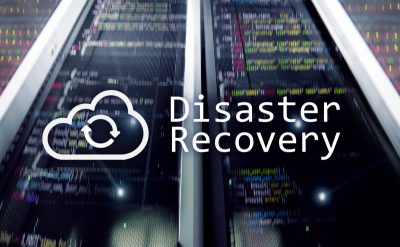“I am moving to Cloud” is heard every time I am meeting a new C-level executive. The only question that I have is, why did you move to cloud? The answers mostly start with digital transformation, flexibility with the usage of applications, and many other times, end up giving the clients/customers a modern outlook about the business.
Cloud is one of the greatest technology buildup laying the foundation for many innovations. We are able to imagine and build products/services better and faster armed with cloud technology, which is set to improve with new business.
Cloud providers are banking on the tools and technology that will build products/services for tomorrow, but how do the businesses decide on the provider? The question is to choose between the computing platforms—Infrastructure-as-a-Service (IaaS), Platform-as-a-Service (PaaS), and Software-as-a-Service (SaaS).
So how does cloud computing work?
It’s like renting a house where the walls don’t belong to you, but with the use of furniture, it transforms into your own. In the cloud, a consumer can use different storage units and perform different computing processes. Pay for what you use and when you use it. Cloud providers have a benefit wherein they can provide the service to a wide range of businesses and gain revenue from them.
The working of cloud computing varies between the services a business chooses to invest in. So what are the Service criteria that need to be satisfied with different cloud platforms in business,
1. IaaS
IaaS provides the infrastructure layer of the stack; some of the providers are EC2, AWS, Rackspace, and Google Computing Engine (GCE). IaaS is an alternative to on-premise infrastructure, giving many of the small businesses an opportunity to scale without having to invest in expensive on-site resources.
IaaS model provides customers with the ease of manually managing infrastructure via consoles or automated via API and code, infrastructure resources for storage, instances, data repositories, security services, network, and many fundamental utility services such as backup. A user is responsible for managing and controlling every aspect from the layer of the operating system and above. The layer includes operating systems, data, governance, other management, and security aspects.
IaaS allows businesses to reduce both human and technical resources that need investment and focus on moving toward higher strategic value for the business. It responds better to all types of workload variations required due to the changing features of the enterprises (acquisition, new decisions, and downscaling).
So if a business wants to build an application from scratch and control every aspect and all the elements themselves, IaaS offers a complete solution. IaaS requires resources’ cost to orchestrate different elements to set the technical elements of a service. Research by two-third of IaaS users says that using the online infrastructure makes it easier to innovate and even reduce the time required for deployment of new applications and services. While 50% of them still believe that IaaS isn’t secure.
2. PaaS
PaaS gives the customer access to the application layer. The application layer is above the infrastructure layer to provide the application layer functions as a service to the customer. PaaS service provides a better development and deployment environment, including the software development framework of operating systems, development tools, and programming interfaces such as .NET, Java, and Python.
PaaS gives additional features such as scalability, multi-tenancy, and high availability, even as the customers are given limited responsibility to build their cloud-based application systems. The service provider manages infrastructure, application stack, and management. Currently, the examples include Azure, AWS Elastic Beanstalk, Oracle IBM, Red Hat OpenShift Container Platform, and Pivotal Cloud Foundry. PaaS offers increased flexibility that most of today’s on-premise platform cannot offer restricted access, in terms of integration of heterogeneous environment. PaaS offers the opportunity to the customer to work with varied technologies as the upgrade from the providers is implemented. The addition brings to quickly develop innovative solutions by providing clients up-to-date offers that are increasingly fascinating multi-channel user experience and satisfying services. PaaS models enable companies to approach application development with trial and error mode and to identify new delivery models. PaaS, in certain aspects, has become the underlying part for the development of applications above the operating system layer. SAP released its PaaS solution in 2012, easing it to manage a broad array of businesses through various built-in services.
3. SaaS
SaaS is a complete application delivered in the form of service via a third party over the internet to the customers. Service providers have complete control over the infrastructure—application deployment, logic, and service delivery. SaaS gives customers an edge to manage all parameters and user management, while some of the top-tier providers include Google apps, Salesforce, Dropbox, DocuSign, HubSpot, and Slack.
SaaS concentrates its value with the continuous innovation of solutions, even add corporate processes and reduce the time to value that offers speed. The user will provide additional flexibility with device usage. SaaS service leads to offering the cloud service provider with an added cost-cutting advantage for the end client with their continuous innovations.
According to researchers, IDS SaaS holds the biggest pie in the computing platform, accounting for two-thirds of all public cloud spending in 2017, and it will only drop to 60% by 2021. SaaS spending is made up of applications and system infrastructure software. According to IDC, spending will be dominated by the CRM and ERM applications that will account for more than 60% of all cloud applications spending through to 2021.
Cloud is slowly becoming an important resource for any business,
Based on the IDC research, building an infrastructure to support cloud computing now accounts for more than the third of all IT spending worldwide. While the spending for the traditional IT infrastructure continues to slide as the computing workloads continue to move to the cloud, it is taken in terms of services offered by vendors or private cloud built by enterprises. Gartner predicts that half of the cloud users now will be all-in on it by 2021, while the cloud spending is all set to reach $260 billion, jumping from $219.6 billion.
Analysts predict that as most of the businesses are demanding cloud solutions, the market cloud providers are offering their service only on the cloud. The challenge, however, remains with business spending still not strategized in terms of infrastructure and computing needs.
Areas to consider before choosing a provider,
1. Security standards and regulations
Providers complying with business standards and regulatory frameworks additionally provide adherence to best practices and standards. The standards will assist in quoting the requirements of the service providers you chose. If security is a priority, certifications and standards are set requirements that any organization should look for.
2. Technology
The provider platform and technology should align with the current environment and/or support the other cloud objective. Do the provider’s cloud architecture, standards, and services suit the workload requirement of your business? Re-coding and customization could be required to suit your requirements but to what extent the business can satisfy such requirements. Many cloud providers offer improved migration services and even provide assistance in the assessment and planning channels.
Cloud provides the road map for the deployment of new solutions and service development, how will the company continue to innovate and grow with new tech innovation, and does the long term road map fit different types of requirements. Specific technology requirements based on vendors and how interoperability is supported for the businesses. Can the business demonstrate similar deployments that are additionally being planned? Service requirements will be sending the technology requirements on the right path of development.
4. Governance
Governance defines the types of data according to sensitivity and/or policies on the data residency. The provider should at least be aware of the regulatory or data privacy rules governing personal data. The location of data resides and subsequent local laws that the data has been subjected to, maybe a key part of the selection process. Sensitive volumes should offer encrypted solutions to limit the exposure with unapproved administrator access.
5. Vendor relationship
The service provider will rely on multiple vendors to satisfy infrastructure and connectivity requirements. Thus, assessing the provider’s relationship with various key vendors, better understand the accreditation levels, technical capabilities, and staff certifications. Does the company supporting a multi-vendor environment would offer varied flexibility for business if a business chooses between the SaaS and CRM? For instance, it might be an opportunity for improving the integration with finance and marketing services.
6. Service Level Agreements (SLAs)
Every service level agreement should cover 3 different parts—service level objective, exclusions and caveats, remediation policies, and penalties/incentives related to these objectives. Accessibility, service availability focusing on up-time, service capacity, accommodation of changes, the time required, and response time will decide depending on how terms are distributed between the contract and SLA.
SLA should specify how the issues should be identified and resolved, who will be responsible, and what is the actual time period required based on what compensation is available and the process for logging difference in level agreements.
Conclusion
Before the migration, a business should identify the customized programs for the suitability and retrofitting for the existing architectures to integrate with better and newer cloud services. Some of the applications implemented for on-premise may not be suitable for the cloud and will require expensive investments to re-architect the legacy architecture. Changing the organization’s management will require resources’ training and hiring new resources or consultants. To know more about cloud solutions, you can download our latest whitepapers on Cloud Solutions.































































![[Things to Know] Before Selecting Cloud Solutions [Things to Know] Before Selecting Cloud Solutions](https://d2qt3hjxf3fk7j.cloudfront.net/wp-content/uploads/2020/02/13083906/Cloud-Solution-1024x631.jpg)








